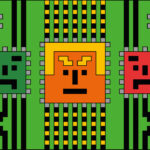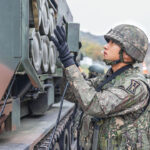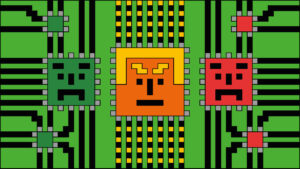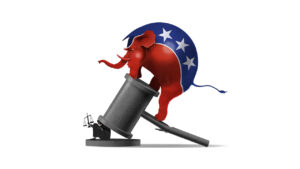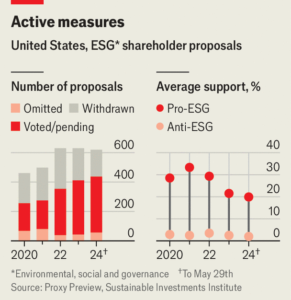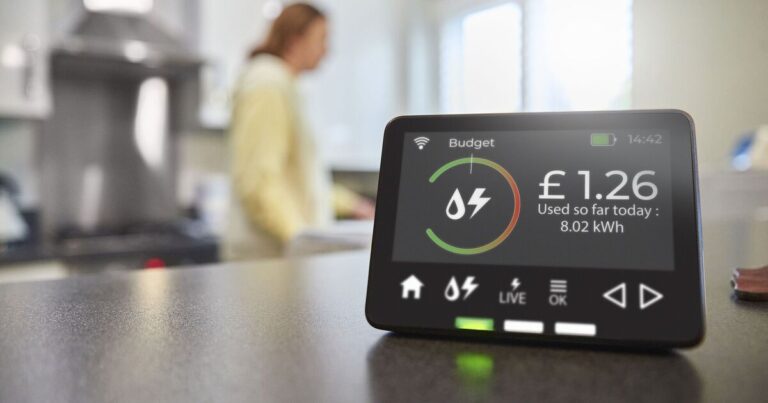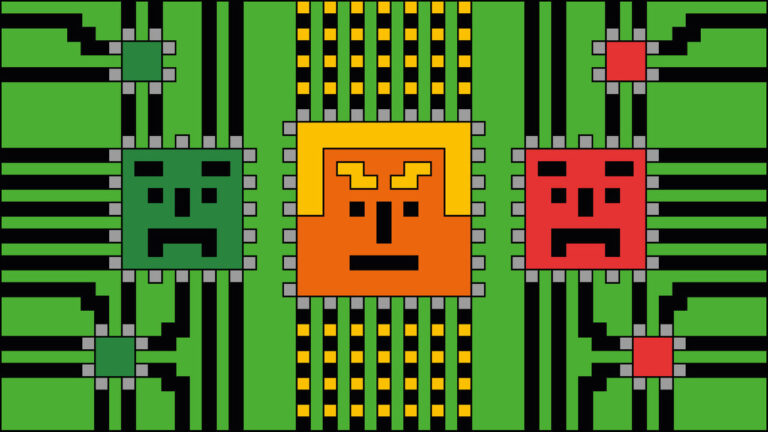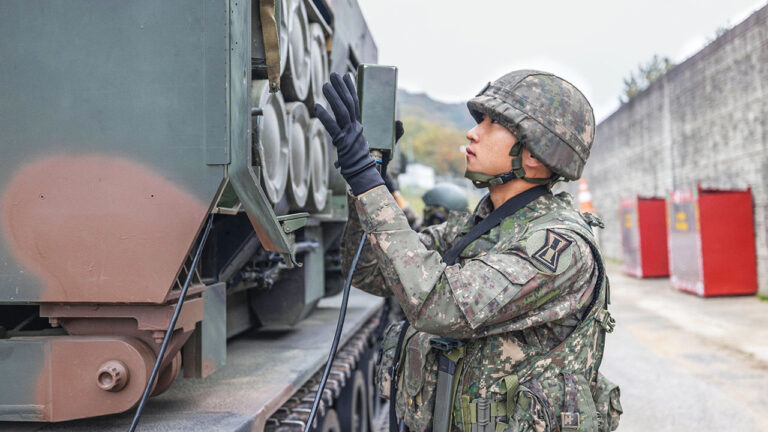
Your browser does not support the <audio> element.
There is a wry sense of seen-it-all-before in the crucible of the world’s semiconductor industry. When your columnist took the bullet train to Hsinchu Science Park, home to Taiwan Semiconductor Manufacturing Company (TSMC), the world’s biggest chip producer, on May 24th, China was simulating a military encirclement of Taiwan in waters not far over the horizon. An invasion would be cataclysmic. A blockade could starve the island of vital energy resources. Even cyber-attacks could be crippling. Yet after decades of belligerence, many Taiwanese greet such threats with a shrug. “It’s nothing new to me,” chuckles one seasoned chip executive. “Since 1996 China has been throwing missiles.”
Semiconductor executives to whom Schumpeter spoke on a tour of Taiwan, South Korea and Japan are not nearly as relaxed about America’s economic manoeuvres against China, though. They say sanctions, subsidies, tariffs and other blunt instruments of geopolitical rivalry and industrial policy may have strategic logic. But they jeopardise one of the miracles of modern technology: the fragile semiconductor supply chain that stretches from East Asia to America and Europe, with Taiwan at its crux. Along it silicon wafers are made and polished, etched with billions of nanometre-size transistors, sliced into microchips and packaged into the brain cells of the digital age. It is a process masterfully honed to combine government support with the invisible hand of the free market. The chip war threatens to bludgeon it.
Consider the ecosystem stretching outwards from TSMC’s Hsinchu headquarters. On one side of the entrance, with a driveway shaped like a silicon disc, is one of its many fabrication plants, or fabs. Across the street is UMC, Taiwan’s other chip giant. Both companies emerged in the 1980s from the government-funded Industrial Technology Research Institute. Since then a quasi-free market has flourished amid the rice fields of north-western Taiwan. Eight square kilometres (three square miles) house hundreds of suppliers, from ASML, the Dutch maker of the world’s most cutting-edge lithography tools, to small laundries that ensure engineers’ white “bunny” suits are dust-free in the light-filled purity of the clean rooms.
The network stretches far beyond Taiwan. From South Korea, SK Hynix supplies TSMC with the latest high-bandwidth memory chips that are crucial for the graphics-processing units it makes on behalf of Nvidia, the artificial-intelligence juggernaut. In Japan, companies like Tokyo Electron, which makes other chipmaking tools, Resonac, producer of chemicals, and Advantest, which tests the quality of finished chips, work alongside numerous small firms to make the country the source of almost a third of equipment and more than half of materials used in chip manufacturing. At the start of the chain, China supplies raw materials like polysilicon. America, for its part, provides the most sophisticated chip designs that breathe life into smartphones and cloud servers.
Now picture a world divided into two semiconductor blocks, with America on one side and China the other, that aim to replicate this cat’s cradle of relationships in an effort to gain strategic autonomy. It is almost impossible to imagine. First, even for staunch American allies such as Taiwan, South Korea and Japan, China remains a crucial semiconductor market, notwithstanding American sanctions on tech firms like Huawei, and export controls on the sale of the most advanced microchips to the mainland. They would be loth to give it up, except in extremis.
Second, decoupling would come at a big cost. One of the marvels of the chip supply chain is how lean it is. The risk is that as big powers such as America offer large subsidies to “reshore” semiconductor manufacturing, the economics will be upended. Subsidies from America’s CHIPS and Science Act, as well as investment tax credits, have helped entice TSMC to build three fabs in Arizona, at a planned cost of $65bn. The company believes it is in its own and its customers’ interests to diversify some of its operations beyond Taiwan. Yet America is not cheap: construction and labour costs are high. Moreover, though it can attract some big suppliers to move with it to America, smaller ones will need to be nurtured in the Arizona desert. This, too, will be expensive. In order to maintain its margins, TSMC has to persuade big customers, such as Apple, to pay more for the option of using American-made chips. Failing that, subsidies will need to flow indefinitely.
Third, consider how different cultures complicate the picture. In Taiwan, semiconductor engineers are renowned for dropping everything, day or night, to fix problems. That helped the industry survive a big earthquake in April with minimal disruption, just as it did the covid-19 pandemic. In America there is, to put it mildly, more regard for work-life balance—and that is if you can find enough qualified semiconductor engineers in the first place.
Headaches aside, many in the industry understand America’s desire to thwart China. They know that China plays hardball with American firms; they accept the region is rife with industrial policy; they understand that Japan, South Korea and Taiwan have to pay a price for living under America’s security blanket. They are loyal soldiers defending the silicon island chain.
Have some vinegar with your chips
What irks them, though, is the feeling that America is upsetting one of the last remaining bastions of globalisation not just for geopolitical reasons, but out of a selfish desire to preserve its economic dominance. One Japanese executive fumes that America is “childish” to try to stifle Chinese competition. A Taiwanese expert asks drily whether it would satisfy the “America First” contingent if TSMC simply changed its name to America Semiconductor Manufacturing Company. Quietly, many hope their firms will continue to straddle the geopolitical divide for years to come. ■
If you want to write directly to Schumpeter, email him at schumpeter@economist.com
To stay on top of the biggest stories in business and technology, sign up to the Bottom Line, our weekly subscriber-only newsletter.





